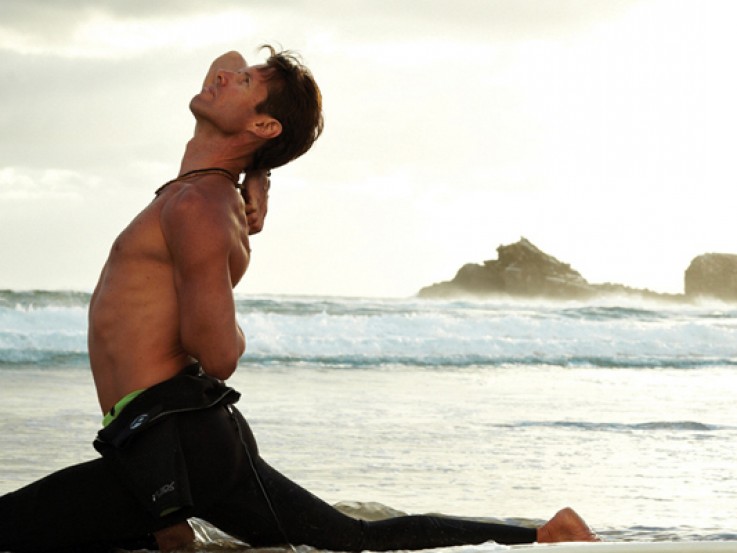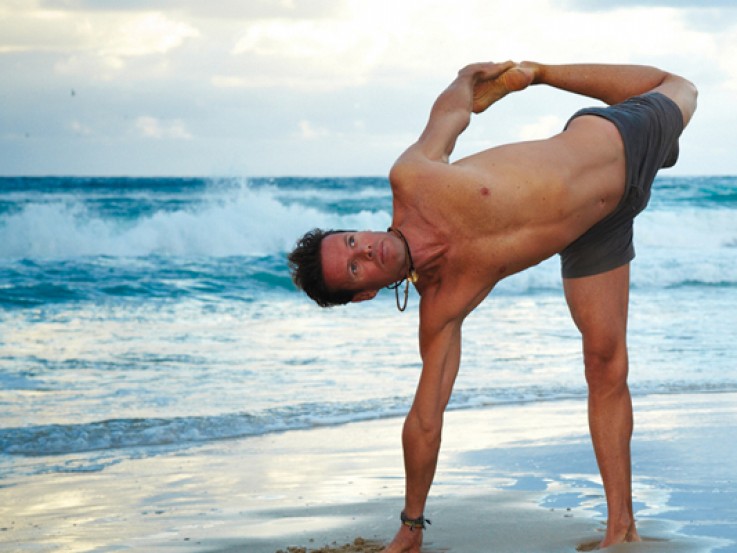Geoff Brooks - Surf / Yoga Instructor
As the demand for preventative healthcare and alternative therapies becomes increasingly popular so too are the diverse career opportunities.
Yoga is leading the charge thanks to an increased demand from ageing baby boomers and the business world embracing the health benefits of yoga and meditation. With the industry expecting significant growth, perhaps a career path in complementary medicine is up your alley. We asked a Byron Bay yogi (and surfer) Geoff Brooks what it takes to become a yoga instructor.
How long have you practised yoga?
I’ve been practising for more than 28 years. I used to do martial arts and was introduced to yogic moves when I was about 15 years of age. I realised the sort of movements that yoga taught helped with my flexibility when I was surfing and I’ve been practising ever since.
What sort of yoga do you teach?
I teach a variety of Hatha Yoga styles and take group classes and one-on-ones. My students include anyone from fairly determined yogis, to mums, and of course, here in Byron, surfers.
What’s the difference between yoga and surf-oriented yoga?
There are a lot of similarities between yoga and surfing. I designed a surf-specific class because I’d met a lot of surfers who couldn’t touch their toes and had issues with their lower back. In my surf-yoga classes I focus on muscle strengthening that will help surfers, for example which muscles you need to strengthen for pops ups, paddling or manoeuvres, as well as techniques to support the lower back and increase generally flexibility.
Which surfers do you work with?
I work with freesurfer Dave (Rasta) Rastovich and Georgia Fish, who is competing in the World Qualifying Series. Dave came to see me last year after sustaining a lower back injury from falling on a reef. We’ve been working on how he uses his core and rectifying movement, particularly in his hips. This has helped him find greater balance and allows him to flow more freely through his surfing. For Georgina, we follow a similar approach focusing on imbalances, releases and strength work.
How did you get involved in teaching yoga?
I started teaching about eight years ago. Prior to teaching yoga I was doing the whole corporate thing - selling IT solutions and running a team for a large multinational – I even donned a suit! But I soon found myself questioning why. My girlfriend at the time joked about me growing my hair long and moving (from Sydney) to Byron Bay to become a yoga teacher, which I thought sounded pretty good! It really just came down to doing the things that made me happy, which was surfing and yoga.
What qualifications or training helped you to become a yoga teacher?
Qualifications for yoga can be quite contentious because there are so many different yoga schools. It’s also a little disconcerting that you can be awarded a certificate to teach after only two weeks of study. I’ve been really fortunate to have some amazing teachers and have studied in the United States and Australia. This has included training in advanced asana, pranayama, mediation, nutrition, anatomy and physiology, as well as many hours spent in workshops and retreats. I also have accreditations in counselling, education and business management and I still use a lot of the skills from my corporate life when I teach.
What do you think makes a good yoga teacher?
I think balance is the key. When you’ve got balance you’ve got clarity – this often comes with experience. Getting a good teacher is also a good start, as they will help you gain awareness about what’s going on, not just in yourself but also in others. Unfortunately, there are a lot of ‘cookie-cutter’ yoga training programs out there, which don’t properly equip people to become good teachers.
What is the best part about teaching yoga?
I love to learn. The name of my studio is Ananta, which in Sanskrit means ‘limitless’ or ‘boundless’. So when I’m teaching I’m always open to possibility, it’s the same as when I’m in the surf. You have to create awareness, observe the conditions around you and alter your approach to suit. As a teacher this can mean sometimes you need to lead the energy of a class while at other times, when the energy is high, you can just let it dance and play with it.
“There is such great synergy between yoga and surfing. You feel the energy and then work with it, it’s just awesome – I love it!” (pull out)
What is the hardest part?
Byron Bay is known as the yoga capital of Australia and if you ask around you’ll find many yoga teachers who aren’t practising – it’s a bit like Los Angeles with actors! I’m fortunate that my style of teaching is popular and I get a diverse range of students coming to my classes. My studio also has a great presence in Byron. I still have to supplement my income though, so I do work for a drug and alcohol rehabilitation program. I also take private sessions, which involves a fair bit of travel, it also means long days and working my arse off!
What advice can you give to anyone wanting to make a career from teaching yoga?
You’ve got to have the right mental attitude and the right physical aptitude even if you don’t have long-term practice. You must also understand the body intimately to ensure your own safety and that of your students. After 44 years on the planet, I’ve learnt that you need to let go of your ego and do things from the heart - that’s when you know you’re on the right track and the right opportunities will open up for you.
Where can we find you online?
| Web: | www.ananta.com.au |
| Facebook: | www.facebook.com/pages/Ananta-YOGA-Byron-Bay |
Posted by: Jaclyn Knight, on April 4, 2014
Categories: Interviews
Latest Posts
Craig Sims - White Horses & Surfing Life Publisher
Luke Kennedy - Editor of Tracks Magazine
Simon ‘Swilly’ Williams - Surf Photographer
Jarra Campbell - the Bondi Alchemist
Greg Gordon - Owner of CR Surf
Shayne Nienaber - Surf Photographer
Alexa Hohenberg - Owner of Still Stoked
Christine Deveney - TapaReef Owner & Creator
Russell Ord - Surf Photographer
Richard Kotch - Surf Photographer
Categories
Interviews
Articles
Videos
Press Releases
Quiz
Archive
December 2018
November 2018
October 2018
September 2018
August 2018
July 2018
June 2018
May 2018
April 2018
March 2018
February 2018
January 2018
November 2017
January 2017
December 2016
November 2016
October 2016
September 2016
August 2016
July 2016
June 2016
May 2016
April 2016
March 2016
February 2016
January 2016
December 2015
November 2015
October 2015
September 2015
August 2015
July 2015
June 2015
May 2015
April 2015
March 2015
February 2015
January 2015
December 2014
November 2014
October 2014
September 2014
August 2014
July 2014
June 2014
May 2014
April 2014
March 2014
February 2014
January 2014
December 2013
November 2013
October 2013
September 2013
August 2013
July 2013
June 2013
May 2013
April 2013
March 2013










